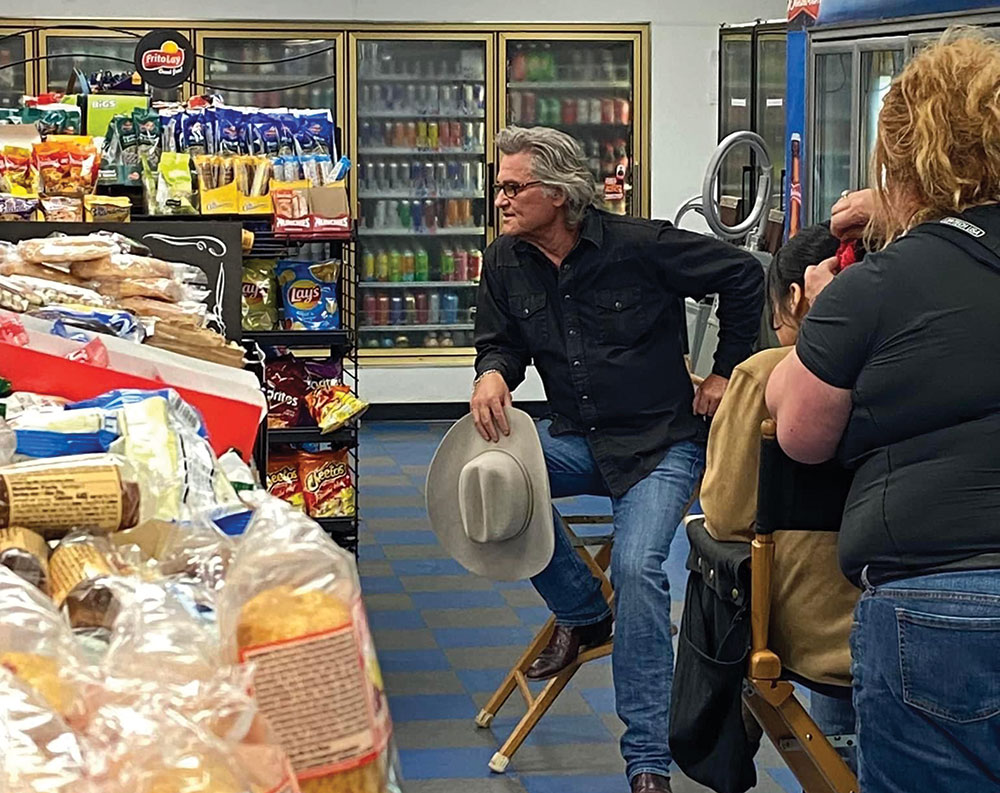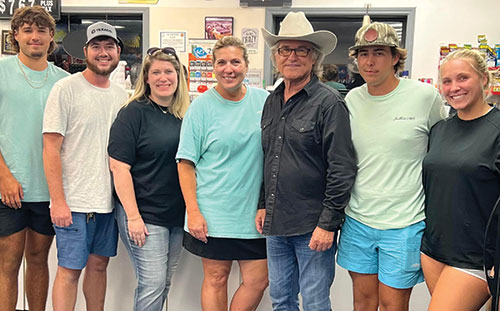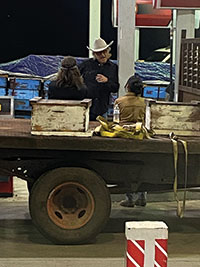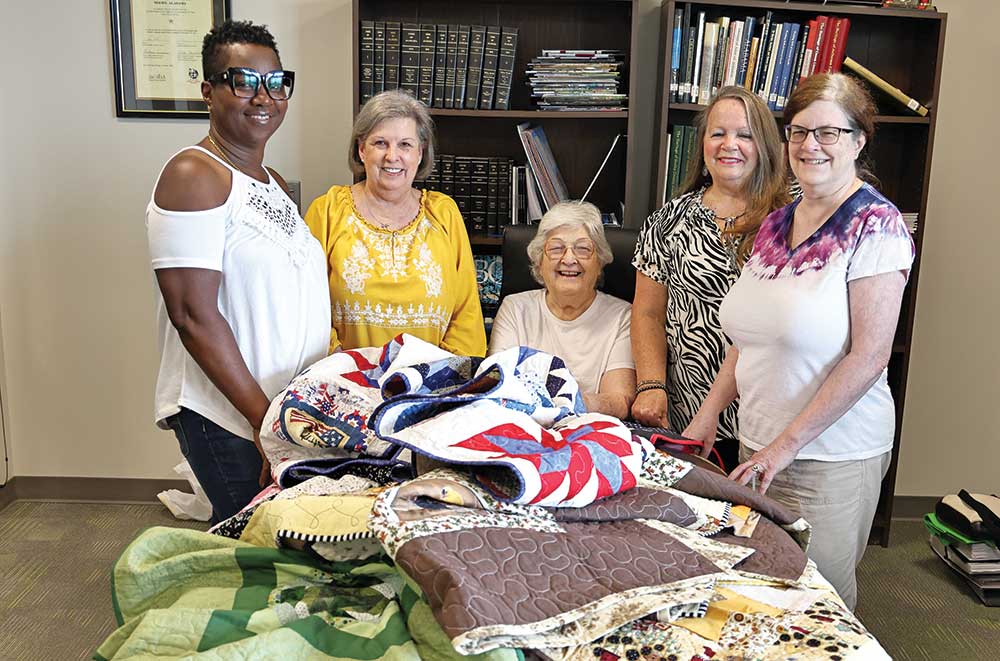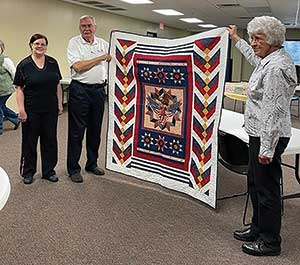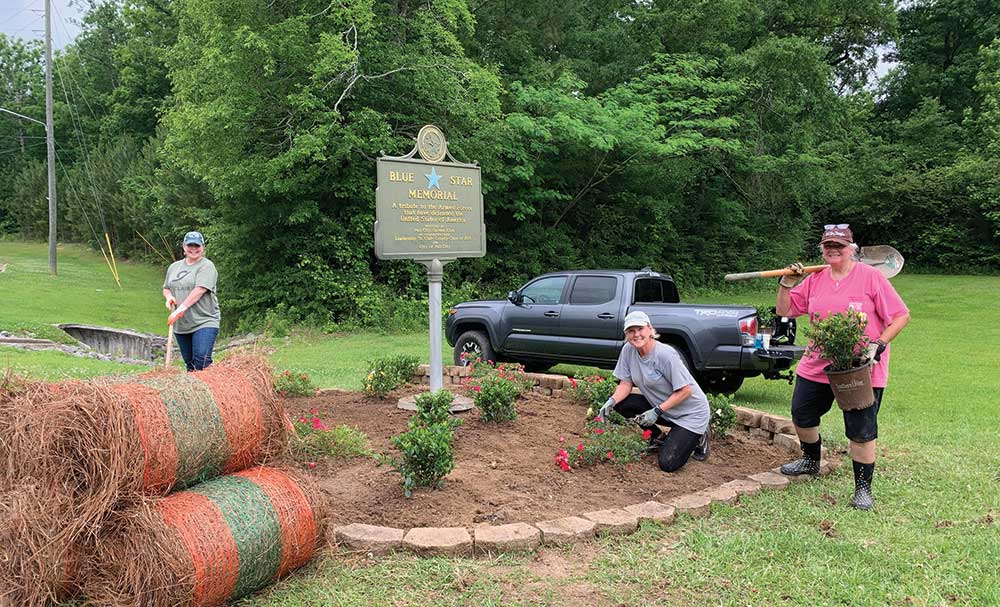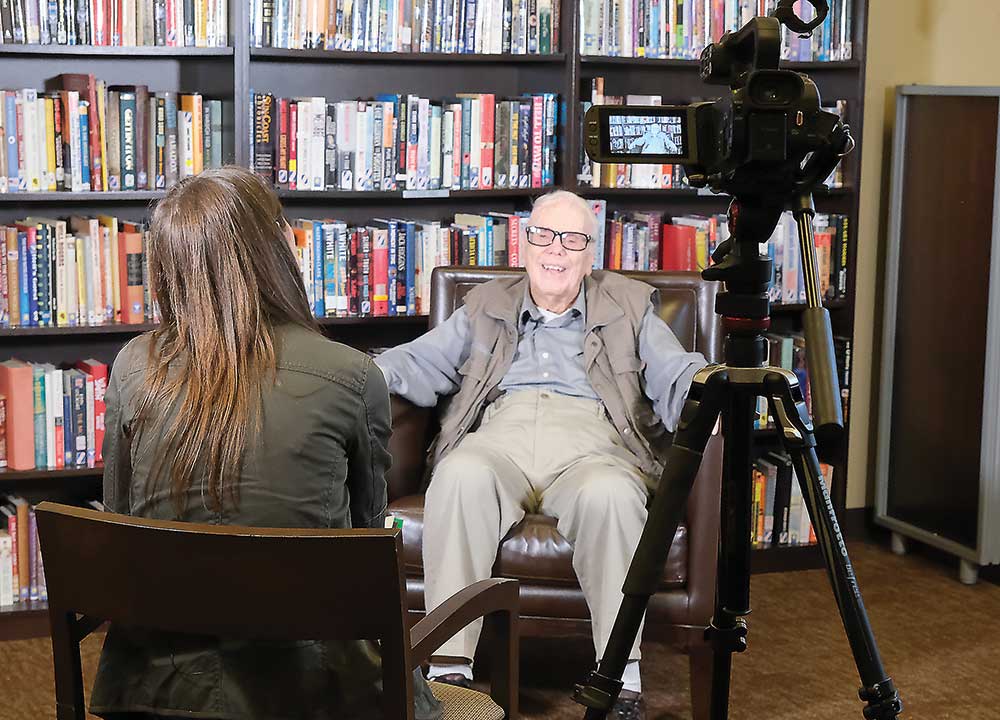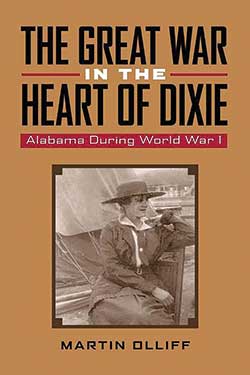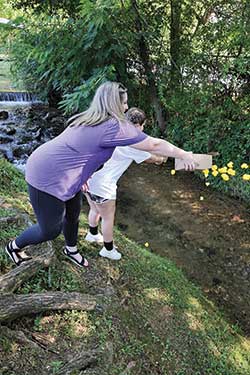Kurt Russell latest actor to film in St. Clair
By Scottie Vickery
Submitted photos
For most folks in Pell City, 2023 will be remembered as the year Hollywood came to town.
Stars fell on Alabama – or at least converged upon the state – for several weeks last summer during filming of The Rivals of Amziah King, a crime thriller written and directed by Andrew Patterson and produced by Black Bear Pictures. By the time filming wrapped, St. Clair County residents were among the many in the state who’d had the chance to rub elbows with the rich and famous.
Oscar winner Matthew McConaughey, who stars in the movie, and fellow A-lister Kurt Russell, who has a supporting role, both shot scenes in the area. “It was an experience I wouldn’t have gotten to have anywhere else,” said Lena Parris, of Ragland, who was among the many who waited for hours to catch a glimpse of McConaughey. “I’m not planning on going to California anytime soon, so I figure this was the closest I was going to get to seeing a celebrity.”
If recent years are any indication, Alabamians will likely have more opportunities for star-gazing and all things show biz, according to Brian Jones, media and location coordinator for the Alabama Film Office. It provides economic incentives to attract film and television projects, and Sweet Home Alabama is serving as a backdrop for a growing number of movies, he said. Each movie filmed in the state often leads to more.
“A lot of times, after doing one movie here, producers and production teams come back and do another one,” Jones said, adding that one reason is the welcome they receive. In larger cities, where filming is a much more frequent occurrence, people get tired of closed streets and other hassles.
“It’s generally the direct opposite in Alabama,” he said. “People are excited, and they’re turning out to see what’s happening. They’re taking photos and having fun. It’s a much more welcoming kind of feeling.”
That’s exactly what happened when McConaughey came to town to film scenes at Pell City Steakhouse and a farm in Cropwell. A crowd of fans endured rain and the summer heat in hopes of meeting the Oscar winner, who starred in blockbusters such as Dallas Buyer’s Club, The Lincoln Lawyer and How to Lose a Guy in 10 Days.
There already had been plenty of Matthew sightings in the state since filming locations included Birmingham, Bessemer, Jasper, Calera and Columbiana. That didn’t take away from the thrill, though, when the cast and crew made their way to St. Clair County.
McConaughey didn’t sign autographs at the Pell City Steakhouse, but the crowd was eventually rewarded with some great photo ops. The star, a graduate of the University of Texas and a huge Longhorns fan, also flashed a big smile and the “Hook ‘em Horns” sign to those gathered.
Behind the scenes
A few weeks after Matthew Mania started to subside, those Crazy for Kurt got their chance to swoon. Russell’s career started in 1963 when the 12-year-old landed a lead role in a Western television series, The Travels of Jaimie McPheeters. Since then, he’s starred in many films, including Escape from L.A.,
Big Trouble in Little China, and Backdraft. He also played Santa in the Netflix productions Christmas Chronicles and Christmas Chronicles: Part Two, and his real-life longtime partner Goldie Hawn portrayed Mrs. Claus.
Ashley Morton, manager of Town &Country Texaco in Cropwell, has long been a fan of Russell’s so she couldn’t have been more thrilled when she learned he would be filming some scenes for the movie at the convenience store in July. He also shot scenes at a home in the Forrest Hills neighborhood.
Morton said a location scout came by one day when she was away from the store, and one of the cashiers called her to say they wanted to film there. “I didn’t believe her,” Morton said with a laugh. “I accused her of messing with me and hung up on her.”
The interest was real, though, and after the scout returned to take some measurements and photos, they eventually signed a contract. Filming was scheduled for late at night, “so we didn’t have to close the store down,” she said. “We were happy about that. The only thing we had to cancel was a Thursday night fishing tournament.” Town and Country is a popular launch site on Logan Martin Lake.
They ended up cancelling it twice after the original filming date was postponed a week. “We had to cancel again, and we couldn’t tell them why,” Morton said. “That kind of had the fishermen’s feathers a bit in a ruffle.”
It was all worth it, though, when filming began. Morton wasn’t sure at first which actor would be in the scenes, but she delighted to find out it was Russell. “I was more excited about him than Matthew McConaughey,” she said.
“He was all business when they were filming, very professional,” she said. “You could tell he’d been doing it a long time and took it very seriously. In between shooting, he was very nice and normal. He said he had enjoyed his time in Alabama.”
The actors and crew didn’t arrive until about 11:30 p.m. and filming wrapped up about 2:30 a.m., said Morton, who enjoyed watching the whole process. “It’s impressive to me how fast everything goes,” she said. “Everyone shows up, and in 30 to 40 minutes, they’re ready to film.”
The number of takes required for scenes was surprising, as well. “The mics pick up so much background noise,” Morton said. “If a car road by on (U.S. Highway) 231, they would have to re-film it.”
In addition to the photos she took, Morton almost ended up with a souvenir from the evening. “They had this old truck pull up to the gas pumps for a scene,” she said. “At the end of the night, everybody leaves, and this truck’s still sitting there. The windows were down, and the keys were in it. I knew there was no way it was supposed to be sitting there like that.”
After she made a quick call to the location scout, some of the crew returned to pick up the truck. “One of them said they would have been missing it on the next day’s shoot,” Morton recalled.
Although she truly enjoyed the experience, Morton said it seemed odd that a movie set in Oklahoma would be filmed in Alabama. That’s part of the magic of Hollywood, Jones said.
Made in Alabama
Film crews can make almost any setting look like another. “Birmingham is a pretty big city, but it’s no Chicago,” Jones said, adding that movies set in the Windy City can still be filmed in the Magic City. “All they’re looking for is an urban setting. They’re just catching the actors on the street with big buildings all around. They’re not going to pan up and show that some of the buildings are only 10 or 12 stories.”
Jones said much of the Jesus Revolution movie, which starred Kelsey Grammar and is set in Southern California, was filmed in Fairhope and Mobile last year. “They filmed three weeks in Alabama and three days in California just to get some of the iconic shots you have to have,” he said.
“We’re blessed, fortunately in Alabama, because we’re a very geographically diverse state,” Jones added. In addition to urban areas like Birmingham, Mobile and Huntsville, there are plenty of rural areas and beautiful countryside.
“In North Alabama, you start getting into the mountains and that kind of look,” he said. “Heading back down toward Mobile, it can look like Savannah, it can look like New Orleans, it can look like the Florida Everglades. We can find a location that matches pretty much any setting unless it’s the North Pole, Antarctica, or the desert. We can’t do that.”
The Rivals of Amziah King, which doesn’t have a release date yet, joins a long list of movies made in Alabama. The first movie filmed in the state, according to the Alabama Film Index maintained by the Alabama Film Office, was the 1949 war film Twelve O’Clock High, with scenes shot at Fort Rucker.
The Phenix City Story was filmed in 1955, followed by four movies in the 1960s. The number of movies filmed in Alabama grew steadily the next few decades, and more than 130 movies or television shows have been totally or partially filmed in the state since 2000.
The lineup includes blockbusters like Norma Rae, Close Encounters of the Third Kind, Big Fish, Selma, Woodlawn and 42. In addition, many St. Clair County residents remember when The Ark, a restaurant in Riverside, was transformed into the White Cow Diner for The Devil All the Time, a 2020 Neflix film.
Big movies often feature big stars, and Alabama has welcomed its share of famous actors and actresses. Bruce Willis was in at least three movies filmed in Alabama (Wrong Place, Wire Room and Assassin). Nicholas Cage, Sally Field, Beau Bridges, Robert DeNiro, Chadwick Boseman and Harrison Ford are also on the list.
The Rivals of Amziah King, in fact, wasn’t the first movie McConaughey filmed in Alabama. He shot part of 2006’s Failure to Launch in the state, including rock-climbing scenes at Cherokee Rock Village in Leesburg.
Show me the money
Having movies made in Alabama is good for the state as well as filmmakers, Jones said. The Alabama Film Office is a division of the Alabama Department of Commerce, and its mission is boosting the state’s economy and creating jobs for Alabamians by attracting film and television productions to the state.
A movie production “pumps a lot of money into the local economy,” Jones said. “The crews stay several weeks, they’re renting equipment and vans and trucks, and they’re eating in restaurants.” In addition, Alabamians are often hired as part of the cast or crew.
Producers benefit because filming in Alabama can be easier, faster and less expensive than filming in other places, Jones said. Movies that cost more than $500,000 to produce and are approved by the Alabama Film Office can earn 25 percent of the production costs back in tax incentives, he said. The percentage jumps to 35 percent when Alabamians are part of the cast or crew.
In addition, the process of getting permits and cooperation from city officials is generally shorter in Alabama, compared to big cities like Los Angeles, San Francisco or New York. That can mean significant savings in an industry where time is money.
“Every day they’re filming is money, money, money,” Jones said. “If you can cut down on the hassles and the delays of getting permits or the delays from waiting on the police to put up barricades, you can cut down on costs.”
That’s not the only way producers can save money. “The cost of filming, like everything else, is lower in Alabama than California,” Jones said. “The cost of gas and meals and everything else is lower. When you’re in Alabama, you’re spending less on all of these other things. Instead of going over budget, they can come in on budget or even under budget.”
That’s why Jones is optimistic that the Alabama Film Index list will continue to grow. “In addition to regular movies, you’ve got all these streaming services doing their own original content,” he said. “We’ve been fortunate to have some really good projects and some cool movies filmed here.”
The Rivals of Amziah King isn’t even the most recent one. Filming for The Life of Chuck, a movie based on a novel by Steven King, recently took place in Fairhope, Mobile and Bay Minette. Chances are, more will follow.
“They all make a difference moving forward,” Jones said. “Even if it’s a year, two years or three years later, someone will say, ‘Remember that Matthew McConaughey movie? That was filmed there.’”











